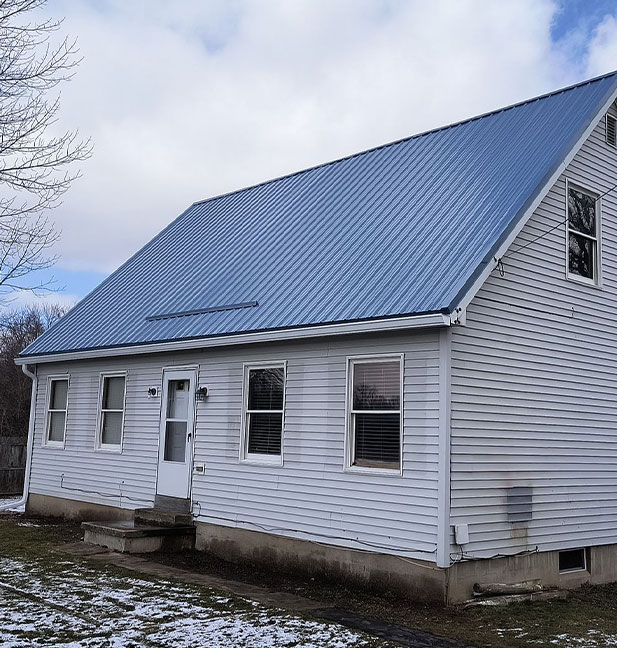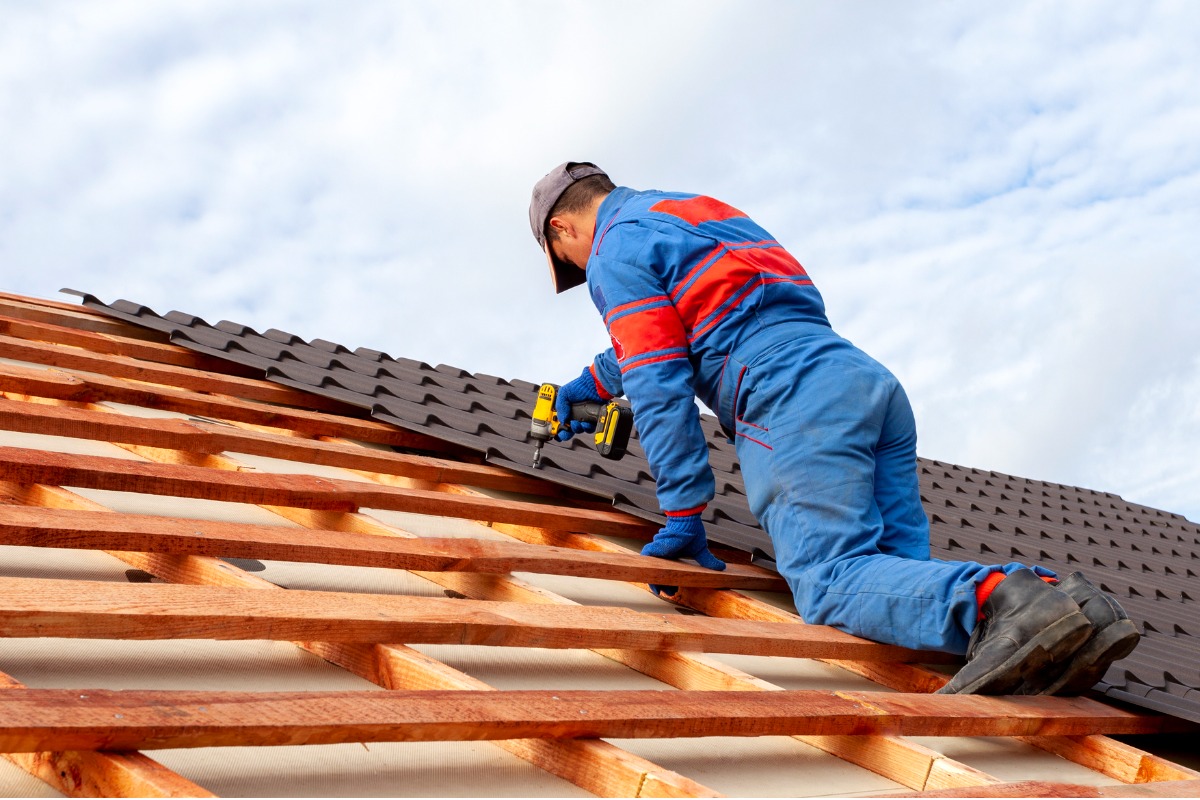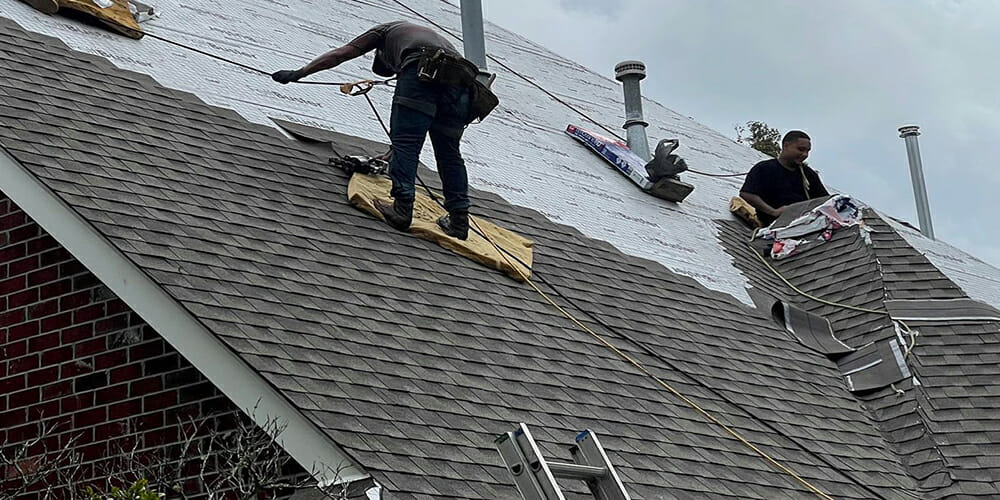Roof Repair for Harsh Weather: Steps You Can Take
Wiki Article
Indicators You Required Roof Fixing: Shield Your Financial Investment With These Easy Checks
Comprehending the indications that show a requirement for roof fixing is vital for guarding your home and investment. Usual signs such as missing out on roof shingles, unexpected water discolorations, and granules building up in gutters can recommend underlying problems that, if left unaddressed, might escalate right into more major issues. Furthermore, indications like sagging locations or boosted energy costs can also indicate ineffectiveness or damages. To assure your roofing remains in leading condition and to stay clear of expensive repair services, it is vital to identify these early indication and act accordingly. What actions should you take next?Missing Out On or Damaged Roof Shingles
When assessing the condition of your roofing, among one of the most telling indications of possible issues is the existence of missing or harmed roof shingles. Tiles work as the first line of protection versus the elements, and their honesty is vital for preserving the general wellness of your roof system - I&E Roofing & Construction, Inc.. A few missing out on shingles might seem minor, but they can result in considerable water infiltration, endangering the underlying structure and demanding much more extensive fixingsDamaged shingles can materialize in numerous methods, including curling, splitting, or blistering. Each of these conditions can reduce the efficiency of your roof covering, enabling dampness to penetrate and cause extra extreme problems. Roofing Service. It is necessary to carry out normal evaluations, particularly after severe weather condition occasions, as high winds and hefty rain can worsen tile deterioration
If you determine missing or damaged roof shingles, it is suggested to address these issues immediately. While small fixings might be workable for a homeowner, extensive damage frequently requires professional treatment. Prompt activity can protect against additional difficulties and guard your financial investment, making certain the long life and efficiency of your roofing.
Water Stains on Ceilings
Water stains on ceilings are often clear indicators of underlying water damage that needs instant interest. Determining the source of these spots is essential, as they can result from various issues, including roof leakages or plumbing problems. Dealing with the source not just stops more damages however likewise safeguards the integrity of the home.Determining Water Damage

When examining for water spots, focus on both the size and shape of the discoloration. Irregular forms might recommend recurring leakages, while more specified areas can show past issues. Additionally, think about the place of the spots; spots near plumbing components or outside wall surfaces might provide clues about potential resources of the water invasion.
It is additionally important to analyze the texture of the ceiling surrounding the spots. Peeling paint or bubbling drywall can signify extensive wetness direct exposure, calling for instant attention. Normal examinations and punctual activity can help prevent extra severe water damage, protecting both the architectural stability of the home and the financial investment it stands for. Constantly consult a specialist for a detailed assessment if you discover water spots on your ceilings.
Reasons of Discolorations
What aspects add to the look of stains on ceilings? Water stains, often showing up as tarnished patches, are mostly triggered by leaks in the roof or plumbing systems - I&E Roofing & Construction, Inc.. When moisture permeates through roofing products or jeopardized plumbing, it can gather and lead to noticeable discoloration on ceilingsOne usual reason is harmed or missing out on roof shingles, which can allow rain to leak right into the attic and, eventually, to the ceilings listed below. In addition, improper blinking around chimneys, vents, or skylights can be a considerable resource of water intrusion. Plumbing leaks, whether from faulty pipelines or overflowing fixtures, can additionally develop spots, specifically in areas straight below shower rooms or kitchen areas.

Determining the source of the tarnish is necessary for effective repair work. Neglecting these indications can lead to more comprehensive damage, consisting of mold growth and structural weakening, emphasizing the relevance of timely treatment to safeguard your investment.
Granules in Gutters
Throughout regular assessments of your seamless gutters, the visibility of granules can be a significant indication of roofing system deterioration. These small, sand-like bits are typically discovered on the surface of asphalt shingles, acting as a protective layer against UV rays and weathering. In time, damage can trigger these granules to remove, resulting in a variety of issues that might compromise the honesty of your roofing system.If you notice a build-up of granules in your rain gutters, it is crucial to take this indication seriously. The loss of granules may expose the underlying asphalt to the aspects, boosting the risk of leakages and water damage. This circumstance not just jeopardizes your roof covering's life expectancy but can also cause expensive repair work otherwise resolved quickly.
To reduce potential damages, it is a good idea to check your roofing system regularly, particularly after extreme climate events. Additionally, engaging an expert professional roofer to assess the problem of your tiles can offer useful understandings. Early treatment is crucial to preserving your financial investment and guaranteeing the longevity of your roofing system. Bear in mind, granules in seamless gutters are not an unimportant problem; they signal the demand for immediate focus and prospective fixing.

Drooping Roofing System Areas
Sagging roof covering locations can show serious structural concerns that require instant interest (Roofing Service). Visible defects on the roofing system's surface, combined with the visibility of water discolorations inside the home, are crucial indication that need to not be forgotten. Attending to these problems without delay can avoid additional damage and expensive repair servicesNoticeable Roofing System Deformities
Just how can homeowners recognize prospective concerns with their roof coverings? Among the most telling indicators is noticeable roof covering defects, especially sagging locations. A sagging roofing may appear as dips or curves, indicating underlying structural troubles that can compromise the stability of the entire roof system. House owners must perform normal assessments, seeking any obvious abnormalities in the roofline.
Numerous elements can add to noticeable defects, consisting of water damages, inappropriate installment, or the weight of gathered snow and debris. If a roofing shows up to sag, it may be an indication of weakened rafters or trusses, which can lead to extra severe issues if left unaddressed. A drooping roofing not only threatens the structural security of the home yet can also cause expensive repair service costs if the problem intensifies.
If drooping or other visible deformities are observed, it is advisable to speak with a specialist roofer. They can analyze the circumstance, determine the source of the sagging, and suggest proper repair work solutions. Prompt treatment is crucial to protect your investment and assure the long life of your roof.

Water Discolorations Inside Home
The visibility of water stains inside the home commonly signifies possible issues with the roof, specifically in areas where sagging has actually been observed. These spots commonly show that water is permeating via the roofing material, which can cause significant architectural damages if left unaddressed. Sagging roofing areas might be triggered by a variety of factors, consisting of insufficient support, accumulated dampness, or the degeneration of roof covering products.When you see water spots, it is important to explore the source of the dampness. Seek signs of sagging in the roof framework, as this can intensify the issue. Often, sagging locations can catch water, resulting in leaks and additional damages. Additionally, it is important to examine the age of the roof; older roofs are much more vulnerable to use and tear, enhancing the chance of leakages.
Trigger activity is essential to mitigate damages. Consult a qualified roof professional to assess the situation and recommend ideal repairs. Overlooking water spots and drooping can bring about pricey repairs and endanger the stability of your home. Shield your financial investment by resolving these indications before they intensify right into a lot more severe troubles.
Raised Energy Costs
An unexpected spike in energy expenses can usually signal underlying issues with your roof. When your roof covering is jeopardized, it can result in significant air leakages, enabling conditioned air to leave and unconditioned air to penetrate your home. This inadequacy pressures your heating and cooling down systems to work harder, leading to raised power intake and higher utility expenses.One typical culprit is damaged or missing out on roof shingles, which can subject your home's inside to the aspects. Additionally, poor insulation as a result of roof covering damage can add to energy loss. If you discover a consistent increase in your power bills without a matching change in usage practices, it is essential to explore potential roof-related concerns.
Regular roofing system evaluations are vital for identifying troubles prior to they escalate right into costly fixings. Try to find visible indicators of wear, such as drooping areas, fractures, or spaces. These may suggest that your roof is no more offering the essential obstacle against the components. Dealing with these concerns immediately can help restore your home's energy efficiency and secure your investment over time. If you believe a problem, get in touch with a roof covering expert for an extensive examination.
Mold or Mildew Development
Mold or mildew development on your ceiling or wall surfaces can be a clear indication of roof-related issues, specifically when dampness infiltrates imp source your home. These fungis thrive in wet settings and can posture significant health and wellness threats, consisting of respiratory system troubles and sensitive reactions. Their existence often suggests that your roof may be endangered, allowing water to permeate in via leakages or spaces.To examine the circumstance, try to find dark areas or discoloration on surface areas, typically in locations near the roofline or where water may gather (I&E Roofing & Construction, Inc.). Additionally, look for any water discolorations, peeling paint, or soft areas in your ceiling or wall surfaces, which might indicate recurring moisture issues
If you see mold or mildew, it is necessary to act promptly. Not just can continued wetness damage your home's architectural stability, however it can likewise result in costly repairs down the line. Involving a professional roofer can aid identify the source of the issue, whether it's harmed roof shingles, inappropriate ventilation, or other concerns. Normal assessments and maintenance can assist avoid mold and mildew development and safeguard your investment, guaranteeing a safe and healthy and balanced living atmosphere.
Age of the Roofing system
Examining the age of your roofing is important in establishing its total problem and possible need for repair work. Many roof materials have a particular lifespan, typically varying from 15 to 30 years, relying on the type of product used. Asphalt tiles, for instance, usually last about two decades, while steel roofs can withstand for 40 years or more. As roofing systems age, they end up being much more at risk to damage from weather, insects, and various other ecological elements.Normal evaluations are essential for roofing systems older than 15 years. Indications of wear, such as cracked or crinkling tiles, missing ceramic tiles, or corrosion on metal surface areas, show that your roofing system might require immediate interest. Additionally, interior signs and symptoms like water stains on ceilings or walls can indicate underlying concerns linked to an aging roof covering.
If your roofing is approaching its expected life-span, think about getting in touch with an expert roofing professional for a thorough analysis. They can supply insights on repair work choices or suggest a substitute if needed. Aggressive monitoring of an aging roof can prevent costly damage to your home and warranty that your financial investment continues to be secured.
Often Asked Concerns
How Commonly Should I Evaluate My Roof Covering for Damages?
Routine roofing system examinations are essential for maintaining the integrity of your home. It is advisable to inspect your roof a minimum of two times a year, preferably in the spring and fall, to identify any kind of potential issues at an early stage. Additionally, after extreme weather condition occasions, such as hefty tornados or hailstorm, a complete assessment is recommended. Resolving small damages immediately can avoid costly fixings and expand the lifespan of your roofing system considerably.Can I Fix My Roofing Myself?
While it is possible to fix your roofing system yourself, it is vital to analyze your skills and the intricacy of the damage. Minor issues, such as changing a few roof shingles, may be convenient for a DIY enthusiast. However, significant fixings or architectural worries often call for professional knowledge to assure security and compliance with building codes. Always prioritize your safety and security and consider getting in touch with a roof covering expert for comprehensive damage or if you doubt about the repair services.What Are the Common Reasons For Roof Leaks?
Usual sources of roof leakages consist of damaged shingles, which can occur as a result of age or extreme weather, and incorrectly secured vents or blinking that may enable water infiltration. In addition, clogged up seamless gutters can lead to water backup, resulting in leakages. Structural problems, such as sagging roofs or jeopardized underlayment, also add to this problem. Routine assessments and maintenance are vital to determine these vulnerabilities and avoid expensive damage to your building.Just How Can I Pick a Reliable Professional Roofer?
Selecting a reputable roofing specialist entails extensive study and examination. Begin by looking for referrals from trusted resources and examining on-line evaluations. Confirm the professional's licensing, insurance, and experience in roofing tasks similar to yours. Demand in-depth estimates and contrast them for openness. Additionally, ask about warranties and post-installation support. A trustworthy specialist ought to communicate plainly and demonstrate expertise throughout the procedure, guaranteeing your investment is well shielded.What Is the Typical Life-span of Different Roof Materials?
The ordinary life expectancy of roof covering products varies substantially. Asphalt shingles commonly last 15 to three decades, while metal roofings can endure 40 to 70 years. Timber trembles usually have a life-span of 20 to 40 years, whereas clay or concrete tiles can surpass half a century with appropriate upkeep. Artificial roofing materials may supply resilience similar to traditional alternatives, often enduring 30 to 50 years. Recognizing these lifespans aids in preparing for upkeep and replacement.Report this wiki page